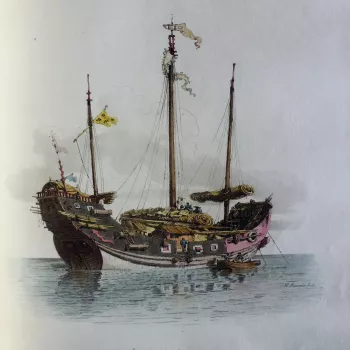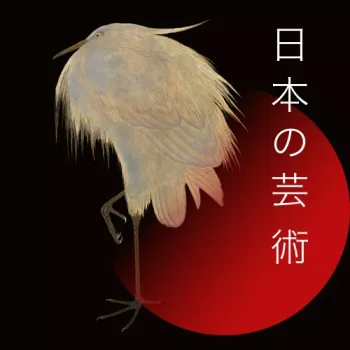Frogmore House: The Green Closet c. 1819
Watercolour and bodycolour over pencil | 25.1 x 20.0 cm (sheet of paper) | RCIN 922123
-
A watercolour view of the Green Closet at Frogmore House, with a red fitted carpet, walls hung with 'Japan' fabric in a green flower pattern with a black and gold border and an Indian cane cabinet and chair. Prepared for one of the plates in William Henry Pyne's History of the Royal Residences (1816-1819). Engraved by W. J. Bennett, the print was published 1.6.1819 so must have been created before Queen Charlotte's belongings were sold in May of that year following her death in 1818.
Pyne's History of the Royal Residences was a three-volume publication which encompassed a number of royal residences, including Windsor Castle (vol. 1) and Buckingham House (vol. 2), presenting 100 hand-coloured engravings of exteriors and interiors accompanied by descriptive texts. The 100 watercolours which were engraved for the publication survive in the Royal Library; these watercolours are exactly the size of the image on the printed plates, and may perhaps have been intended as colour guides for the artists responsible for hand-painting the monochrome prints.
Frogmore House, in the grounds of Windsor Castle, was purchased by Queen Charlotte in 1792 to use as a daytime retreat. The Green Closet was a small room located on the first floor at the north-western corner of the house, overlooking the garden. According to Pyne, the lacquer panelling here was ‘original japan’ rather than an imitation produced by Princess Elizabeth. Against the back wall, the two small cabinets on stands might possibly be lot 117 from the sale of Queen Charlotte’s goods by Christie’s on 8 May 1819: ‘A pair of square cabinets of raised gold Japan, brass bound, with seven drawers in each, on stands.’ The large cabinet may be lot 124 on the same day: ‘A raised gold Japan bureau and cabinet, fitted up with drawers, pigeon holes, &c. six feet eight inches high.’33 Such items of furniture may have been made with lacquered panels imported from Japan or China, or have been ‘japanned’ with an imitation varnish in Britain. The cabinet and chairs were made of Indian cane and the porcelain vases on the top of the cupboards and cabinet are probably all of Far Eastern origin. This room may have housed some of the imperial gifts presented to George III by the Qianlong emperor in 1793. These included porcelain, jade, red lacquer caskets, carved lacquer panels and silk. In the course of his visit to Frogmore in 1797, Joseph Farington noted ‘some presents from the Emperor of China’.
Text adapted from George III & Queen Charlotte: Patronage, Collecting and Court Taste (London, 2004) and Japan: Courts and Culture (2020).Provenance
Probably acquired by George IV
-
Creator(s)
Acquirer(s)
-
Medium and techniques
Watercolour and bodycolour over pencil
Measurements
25.1 x 20.0 cm (sheet of paper)
Other number(s)
RL 22123Alternative title(s)
The Green Closet, Frogmore.











